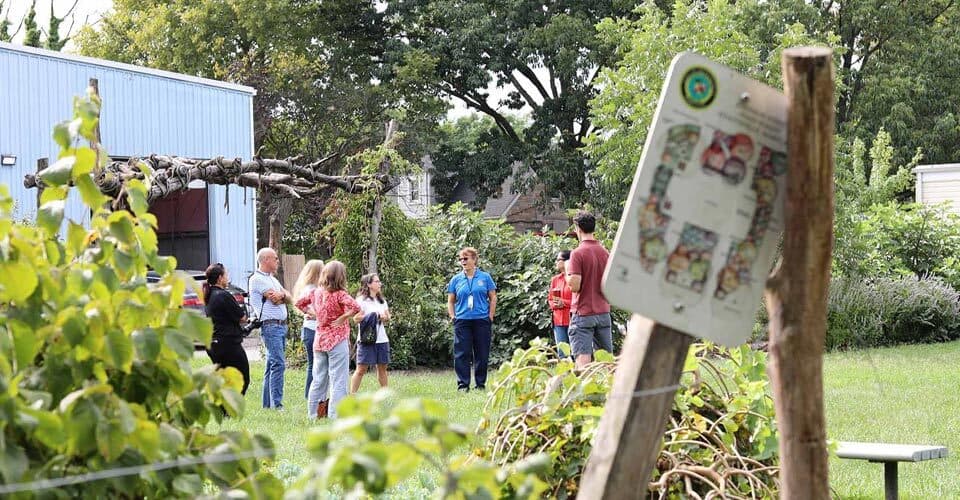The FEWture of Food Forests

Passersby seeking a snack or salad ingredients will find more than apples, strawberries and walnuts in Hyattsville’s two food forests, where members of UMD's Global FEWture Alliance and community leaders have teamed up to improve water and energy efficiency.
Persimmons, Pawpaws and Beach Plums Thrive in Edible Ecosystems
By Heidi Scott ’09
Photo by Heidi Scott ’09
Illustration by Lincoln Smith
On a former gravel parking lot in Hyattsville, Md., next to the old freight rail line and across from an auto repair shop, the hazelnuts have gone nuts.
Pawpaws, figs, persimmons, kale and lemony sorrel are among two dozen varieties of fruits, nuts, greens and legumes thriving in the Emerson Street Food Forest, one of the city’s two edible landscapes, which double as outdoor gathering spaces. Now University of Maryland researchers and students from the Global FEWture Alliance are teaming up with the community’s leaders to improve their water and energy efficiency.
Their goal: to increase food security, make the environment more resilient to drought, and improve the community’s sense of cohesion and even the mental health of its residents—and then to seed this model elsewhere.
“We are thrilled to be partnering with the city of Hyattsville, bringing innovative water and waste reuse solutions that can enhance the sustainability of these flourishing food forests,” says Amy Sapkota, MPower Professor of environmental health and director of the CONSERVE Center of Excellence.
She’s also head of the Global FEWture Alliance, which was launched through a $3 million UMD Grand Challenges Institutional Grant last year to develop solutions at the food-energy-water (FEW) nexus—whether in Israel, Nepal, Tanzania, or just down the street from UMD in Hyattsville.
You’ll find the following produce at the Emerson Street Food Forest—but probably not at your grocer:
0 Comments
Leave a Reply
* indicates a required field
